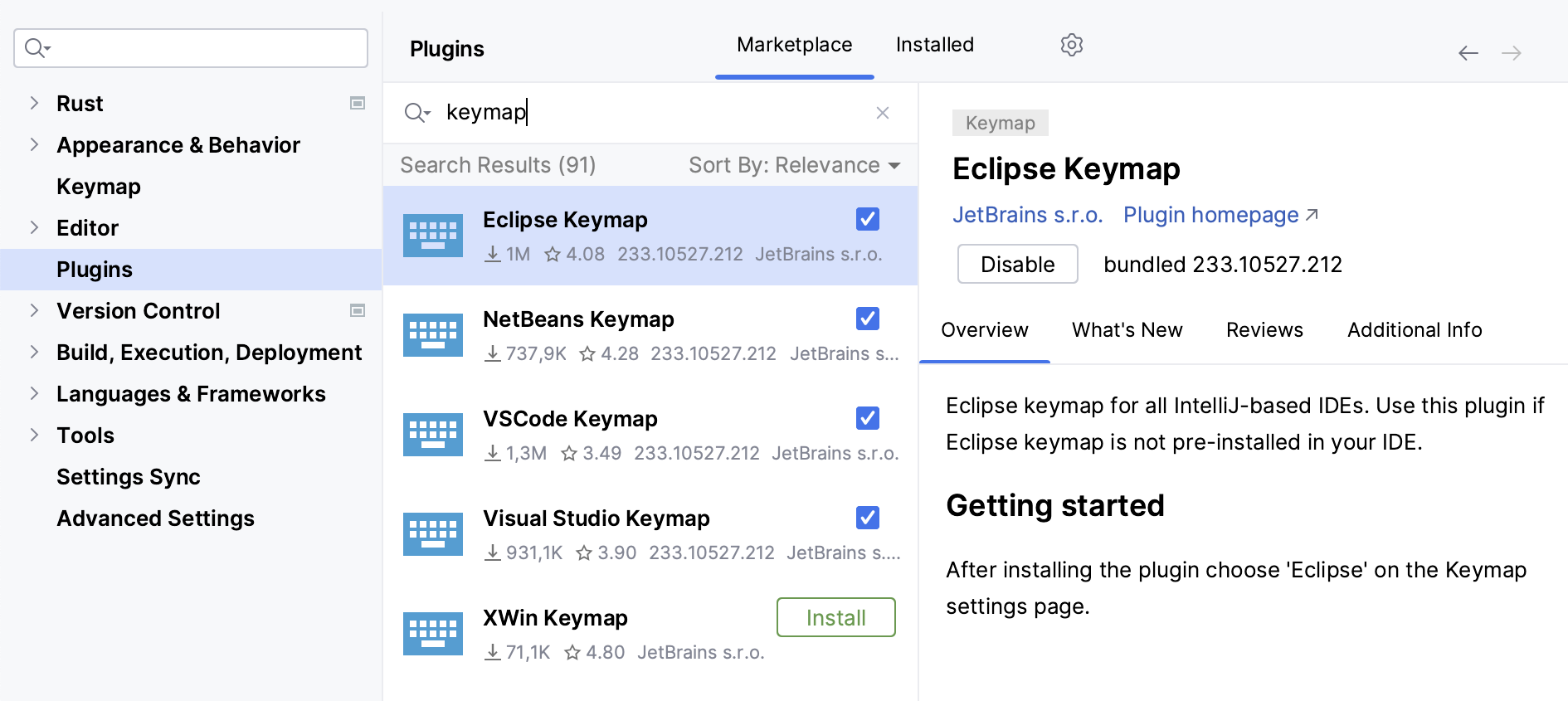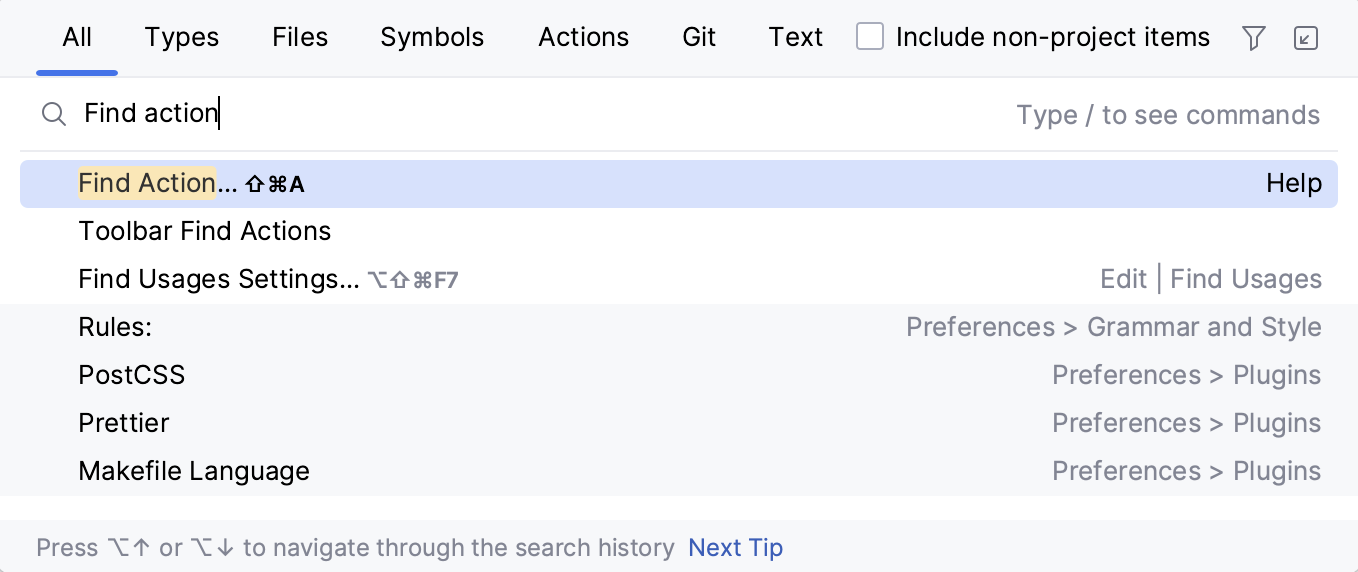RustRover keyboard shortcuts
RustRover has keyboard shortcuts for most of its commands related to editing, navigation, refactoring, debugging, and other tasks. Memorizing these hotkeys can help you stay more productive by keeping your hands on the keyboard.
All default shortcuts are configurable and you can also assign shortcuts to any action that does not have them by default.
note
If your keyboard does not have an English layout, RustRover may not detect all the shortcuts correctly.
The following table lists some of the most useful shortcuts to learn:
Shortcut | Action |
|---|---|
Double | Quickly find any file, action, type, symbol, tool window, or setting in RustRover, in your project, and in the current Git repository. |
Find a command and execute it, open a tool window, or search for a setting. | |
Double | Execute commands, such as opening a project, launching a run/debug configuration, running a command-line utility, and so on. The available commands depend on the set of plugins and tools you have configured for your project. |
Quick-fixes for highlighted errors and warnings, intention actions for improving and optimizing your code. | |
Navigate between code issues Jump to the next or previous highlighted error. | |
View recent files Select a recently opened file from the list. | |
Insert any necessary trailing symbols and place the caret where you can start typing the next statement. | |
Reformat the whole file or the selected fragment according to the current code style settings. | |
Refactor the element under the caret, for example, safe delete, copy, move, rename, and so on. | |
Increase or decrease the scope of selection according to specific code constructs. | |
Add/remove line or block comment Comment out a line or block of code. | |
Navigate to the initial declaration of the instantiated class, called method, or field. | |
Show all places where a code element is used across your project. |
To view the keymap configuration, open the Settings dialog and select Keymap.
warning
Enable function keys and check for possible conflicts with global OS shortcuts.
RustRover automatically suggests a predefined keymap based on your environment. Make sure that it matches the OS you are using or select the one that matches shortcuts from another IDE or editor you are used to (for example, VS Code).

When consulting this page and other pages in RustRover documentation, you can see keyboard shortcuts for the keymap that you use in the IDE — choose it using the selector at the top of a page.
Besides the default set of keymaps, you can install keymaps from plugins (such as, keymaps for GNOME and KDE): open the Settings dialog , select Plugins, switch to the Marketplace tab and search for keymap.

RustRover provides several possibilities to learn shortcuts:
The Find Action lets you search for commands and settings across all menus and tools.
Press and start typing to get a list of suggested actions. Then select the necessary action and press to execute it.

note
To add or change the shortcut for any action, press when it is selected in the list.
Key Promoter X is a plugin that shows a popup notification with the corresponding keyboard shortcut whenever a command is executed using the mouse. It also suggests creating a shortcut for commands that are executed frequently.
To print a non-default or customized keymap, use the Keymap exporter plugin.